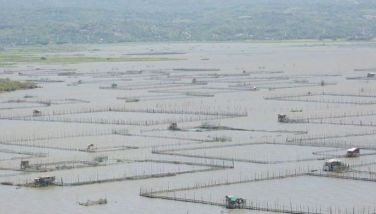Water crisis blamed on overlapping bureaucracy
MANILA, Philippines - A study conducted by a strategic policy group has blamed the overlapping functions of at least 12 major government agencies over the management of water as the main cause of a looming crisis that has already hit Metro Manila and other areas of the country.
Forensic Law and Policy Strategies Inc. (Forensic Solutions) – a think tank offering services in the fields of policy, law reform, advocacy and governance – said that despite the abundance of water, the country is now suffering from a water shortage due to fragmented management of available resources.
In a policy paper entitled “Tightening Water Regulation,” which forms part of the water series of Forensic Solutions, the group said the country’s water problem is actually ironic, because the country has enough freshwater resources, rainfall, surface water and groundwater to meet the requirements of the country’s ever-increasing population and rapid urbanization and industrialization.
“This menagerie of laws led to the current weak and fragmented institutional and regulatory framework in the water resources sector and the absence of an integrated water resources management that adopts a holistic approach to water sector demands.
“With regulatory functions controlled by so many different agencies, enforcement becomes difficult, especially when mandates and accountabilities overlap,” wrote former Justice secretary Alberto Agra and lawyer Mari Jennifer Bruce, a specialist on water, energy and infrastructure and consultant of the Asian Development Bank.
Forensic Solutions is headed by Agra, also former solicitor general and government corporate counsel.
The paper also noted that “although the National Water Resources Board (NWRB) is designated under the Water Code of the Philippines as chief overseer of water resources management in the country, NWRB actually shares, if not competes for, its ostensibly all-encompassing mandate with more than 30 other government offices and corporations that all deal with either water supply, irrigation, hydropower, flood control, water management or other water-related concerns in accordance with their respective mandates.”
Worse, it added, NWRB suffers from underfunding from the national government, which limits its ability to hire experts, obtain complete data for planning and management, and to regularly monitor water resources and water resource activities at the local and national levels.
Forensic Solutions likewise pointed out that proof of the national government’s apparent neglect of this regulatory agency that is in charge of an essential resource like water is that its annual budget is even lower than those of relatively smaller institutions like the Commission on Filipino Language (CFL) and the Cotton Development Administration (CDA).
The group, citing data from the Department of Budget and Management (DBM) website, said that the 2010 annual budget of the NWRB is only P35.98 million, or just a little below the respective P36.85 million and P42.65 million allocations of the CFL and CDA.
In contrast, the year’s budget of the Energy Regulatory Commission (ERC), the NWRB’s counterpart in the equally vital energy sector, is P180.05 million, or five times more than that of the NWRB.
“It is even more astonishing that the total budget of P670 million for the Philippine Carabao Center is 19 times more than that of the NWRB budget,” the group pointed out.
Too many cooks spoil the broth
Forensic Solutions said these 30-plus agencies and corporations include the Local Water Utilities Administration (LWUA), National Economic and Development Authority (NEDA), Department of Public Works and Highways (DPWH), Department of Agriculture (DA), Department of Environment and Natural Resources (DENR), Department of Health (DOH), Department of Interior and Local Government (DILG), National Irrigation Administration (NIA), Laguna Lake Development Authority (LLDA), and the National Power Corp. (Napocor).
Because of this unduly intricate regulatory structure, Forensic Solutions said these agencies are at times working at cross purposes or are not able to get their act together in properly conserving, managing or allocating the country’s water resources among household, agricultural, commercial and industrial users.
Citing official data, it said the country has abundant water resources, given the DENR’s disclosure that dependable surface water is at 125.8 billion cubic meters and groundwater potential of another 20.2 billion cubic meters.
The group likewise said that the Philippine Atmospheric, Geophysical and Astronomical Services Administration (Pagasa) had pegged annual rainfall at a low of 965 millimeters to a high of 4,064 millimeters.
To abate further water supply shortage, the group said measures must be taken short of an overhaul of the current water regulatory system.
The NWRB, as the apex regulatory body, must be strengthened to perform its mandate of managing water resources. Coordination among agencies involved in water regulation must be emphasized, and the functions of each streamlined. – With Rhodina Villanueva
- Latest
- Trending



























